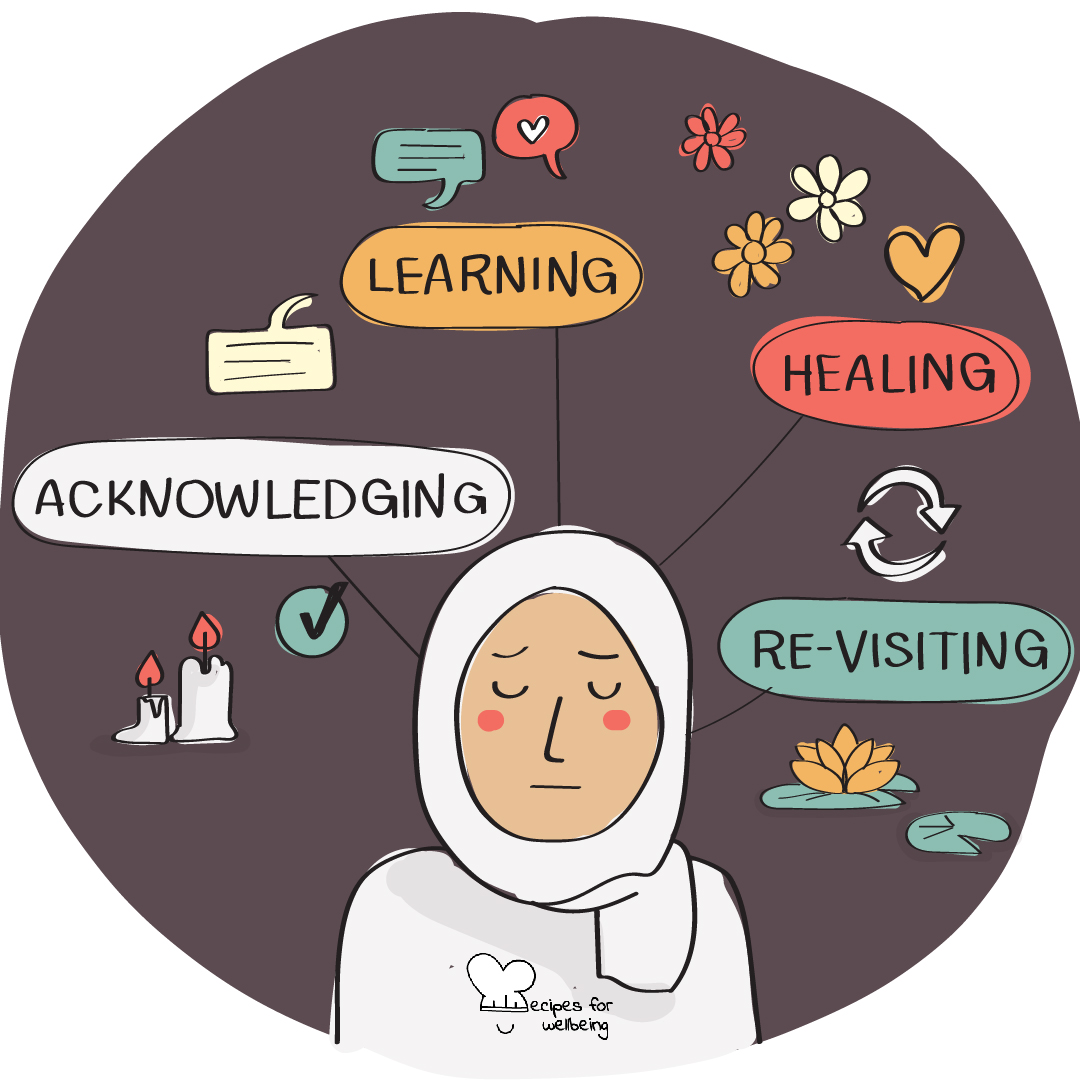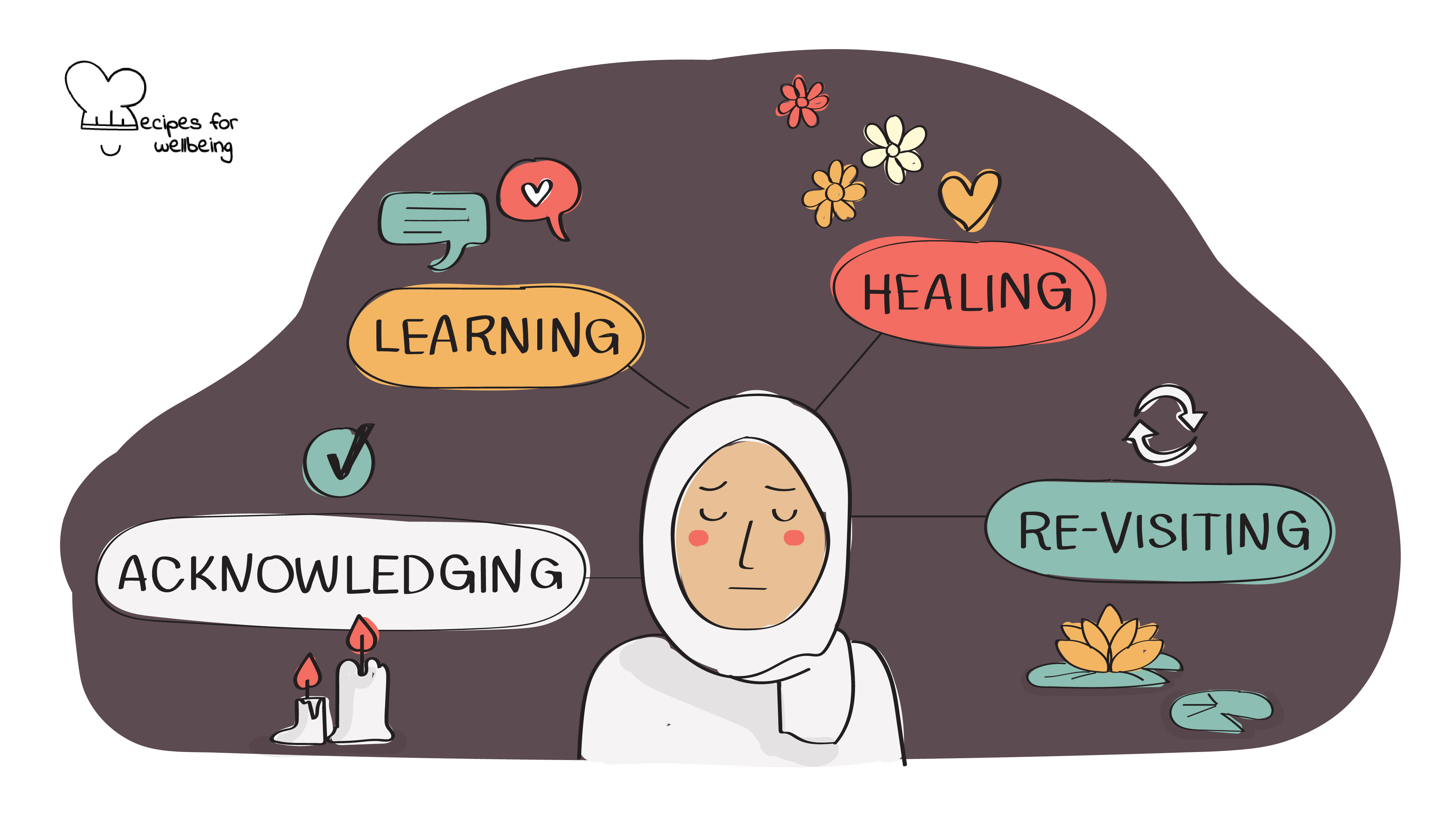
Mind mapping for grief
May love be what you remember most. ―Darcie Sims
👥 Serves: 1 person
🎚 Difficulty: Medium
⏳ Total time: 61-120 minutes
🥣 Ingredients: A quiet place with no distractions, paper and paper
🤓 Wholebeing Domains: Awareness, Discomfortability, Liberatory Learning, Positive Emotion, Radical Care
💪 Wholebeing Skills: Acceptance, Calm, Centring, Compassion, Grieving, Grieving the future, Letting go, Mindfulness, Sense-making

Mind mapping for grief
📝 Description
An exercise to work through the heaviness of grief.
Grief can be experienced for a myriad of things: the loss of a loved one, a friendship ending, a job loss, a large life change, or a goal that never transpired. Grief can follow you like a shadow, and one way to handle the immense pain and loss of grief is, when you’re ready, befriending the shadow and meeting yourself where you are by making a mind map for grief.
The mind map for grief guides you to discover strength to move forward with your life, by breaking down specific steps to guide you through grief. A mind map is useful for establishing new habits, ideas, thoughts, and behaviours. It allows you to process the information well in mind, as a tool for lasting change. You may find this activity useful as you go through our recipe “Gentleness through grief”.
This recipe has been created by our wellbeing content writer collaborator Marissa Del Mistro.
•••
Important: We shared this recipe as part of our blog post “Wellbeing for Ukraine” and you can access a translated version here (kindly translated by our changemaker friend Nadiia Mykhalevych).
👣 Steps
Step 1 – Acknowledge (40’)
Gather your pen, paper, and find a space that is quiet, peaceful and without interruptions. On your paper, the first word you will write, in the middle of your paper, is your centre word. This word could simply be the word “grief”, or you may wish to personalise it with the name of the loss, a descriptive word on how you feel that day, or another personal antidote.
Stemming from your chosen centre word will be the word “Acknowledge”. You can circle this word, and from it, you will write different words that come up for your experience of grief. Everyone’s experience is different, and you can write sentences that come up, expressions on yearning, guilt, regret, fear, and loss. Be open and honest with whatever comes up and write that down – without judgement.
Step 2 – Learn (40’)
The next stem on the mind map will be focused on the word “Lessons”. Draw a line from the centre word from step 1 and write Lessons. Stemming from this word, you can think about various ways you can focus on your future, ways to move forward with the grief.
This is a difficult stage of the grief map as the lesson may seem unbearable to consider. You can try to uncover a lesson from this loss, such as:
- “What area of my life requires attention?”
- “What can I do with more of my day to day?”
- “What would (your loss) want from me?”
- “What strength can I pull from this situation?”
Everything in life has a lesson waiting to be uncovered. This stage is to help uncover reasons to keep pushing through the pain.
Step 3 – Heal (40’)
Once you recognise the lesson(s) to be learnt from the impossible, you can then focus on things that will help your healing process. Healing is ongoing and you may never be “healed” as such, but there are ways to manage the hurt.
Stemming from the word healing, write activities or events that make you feel happy. This could be anything, so long it’s something that helps cultivate acceptance, optimism, hope, and gratitude.
Consider a new hobby, joining a group, learning a new language, or starting new gratitude and mindful practices. This also includes recognising your support system, the special people that you lean on in your life that you trust.
This is not to be confused with distractions – that is not the goal. The goal is to put your energy into healing yourself while acknowledging your hurt and pain.
Step 4 – Re-visit (on a regular basis)
Revisiting your mind map for grief regularly helps your brain to recognise the work you put in, and to re-focus. It allows time for reflection on what you are doing well regarding the map and what is changing, and what may require additional time in your life to work through the grief.
With grief, there are often triggers or events that may rekindle old wounds, such as anniversaries. To help cushion yourself for these challenging reminders, it can be worthwhile to plan to revisit the mind map around these hard events.

